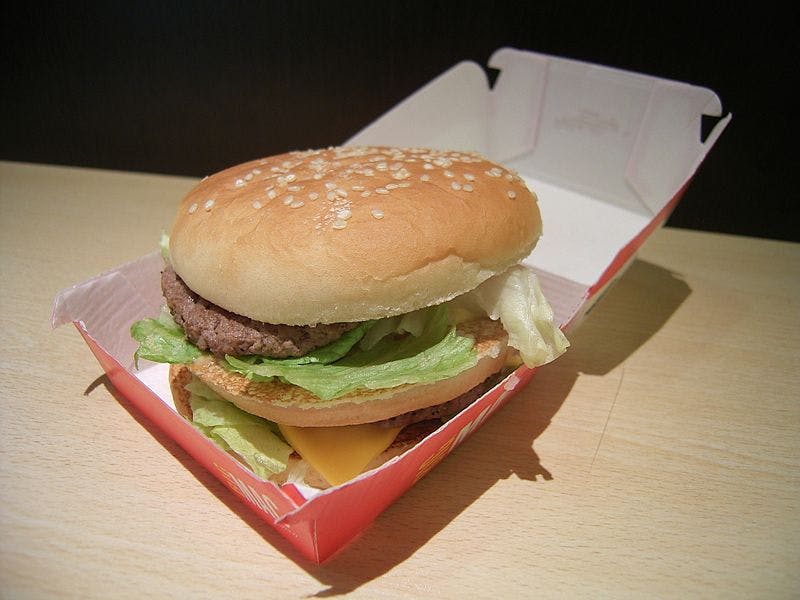Commited to a Lack of Commitment

Photo by John Slipec, Wikimedia
Dustin Byfuglien is a big guy. How big exactly? Well, nobody really knows.
Or so we thought.
Byfuglien has always been reluctant to drop the true number in regards to his weight, and it is completely his right to do so. Yet, Gary Lawless released an article Tuesday in which he states that a reliable source for fellow Jets blogger Pete Tessier has learned that Byfuglien weighed in at 302 pounds at the end of this season. That’s a lot of human.
Personally, the weight itself isn’t what bothers me. Despite his size, Byfuglien has been able to be a dominant defenseman in the NHL (when he decides to be), and has an absolute cannon from the blue line. My problem comes in the fact that somehow Dustin Byfuglien managed to actually gain weight throughout an NHL season. That’s no easy task, and to me speaks to a total lack of caring and commitment.
How much weight did Buff gain exactly? Well nobody really knows, but the Jets site has him listed at 265lbs. Therefore, just assuming this is somewhat close (doubtful, but it’s all I have to work with), Buff managed to gain 37lbs while playing professional hockey. Umm… What?
How outrageous is this? Well, luckily stuff like this happens to be an area of expertise in my schooling, so I’m going to do my best to explain this to you.
First things first, let me remind you that this is all during a hockey season. Therefore, Dustin (just like any other player) likely was not lifting weights with a goal of increasing muscle mass (which is denser & therefore weighs more than fat), but likely just for maintenance. In fact, he probably should have lost weight simply due to the loss of muscle throughout the year. (This is why players like MacKinnon don’t partake in the fitness testing before the draft. It’s too soon to the end of the Memorial Cup, and they haven’t been training hard for months)
On average, it takes about 3500 calories left “unused” by your body for it to store 1lb of fat. This number is generally similar among all people and body types.
The average sized male will have a metabolic rate around 2000kCal (calories) per day. This means that just to keep yourself alive with some basic walking and movement, your body will burn/consume 2,000 calories. Dustin Byfuglien’s metabolic rate would be much higher than the average male, due to his size and muscle mass. So, just to be safe let’s underestimate that his metabolic rate is around 2,500 calories per day.
Now factor in the fact that he plays NHL hockey, with near daily practices and very few complete off days. I did a quick search, but was unable to hunt down the exact caloric expenditure of an NHL player during a game (obviously, no player is going to allow a researcher to mess with him). So, I’m going to do my best to estimate. An average 20 minute run at a decent pace would burn about 500 calories. That’s likely low-balling again, so lets pop that number up to about 750 extra calories (probably still low-balling) burnt a day playing hockey.
Math Time
Time for some simple math. Let’s take that 2,500 calories burnt a day to simply stay alive, and add the 750 he likely burnt daily playing hockey.That means Buff’s body required on average 3,250 calories every day to run. Every calorie above that would contribute to energy storage (fat), and every one lower would require his body to draw from that storage, thus burning the fat (meaning weight loss).
The Jets season this year ran from January 19th to April 25th, a span of 97 days in which he put on 37 pounds. So if one pound of fat is 3500 calories, Byfuglien had to eat 129,500 more calories than he burnt in those 97 days. That’s an excess of approximately 1,335 calories PER DAY. To make this clear, he over-ate by more than half of what an average male would require every day. For this to happen, Byfuglien had to consume his 3,250 calories just to live, plus the excess of 1,335. That means he ate about 4,585 calories every day for 97 days.
Just how much is 4,585 calories? A Big Mac meal from McDonalds with large fries and a large Coke totals about 1,420 calories. Therefore, if Dustin ate 3 “supersized” Big Mac meals every day, he would have hit 4,260 calories. Still enough room for a nice apple pie afterwards. Keep in mind, I underestimated more than one number while doing this, so odds are he would have had to eat more than that. Every day. For 97 days.

What’s The Point?
My point is simple. I’m fine with Byfuglien’s weight. Will it slowly deteriorate his body faster than if he didn’t weigh so much? Yes it will. In fact, I would be terrified to see what’s going on with his knees. Yet, somehow he still manages to be a very effective hockey player.
My problem arises from the fact that Byfuglien almost has to TRY to gain that much weight. I see this as a huge slap in the face. Dustin is a talented and loved player in this city, but just does not seem to care enough to pay attention to what or how much he is eating. That annoys me. Especially when you consider how good he could be if he truly commited himself to fitness.
Something needs to be done. Someone needs to talk to Buff, and get through to him that this needs to stop. Put in an effort. That’s all we really want as fans, and I think getting paid over $5 million a year warrants at least that much effort.
Recent articles from Travis Hrubeniuk





